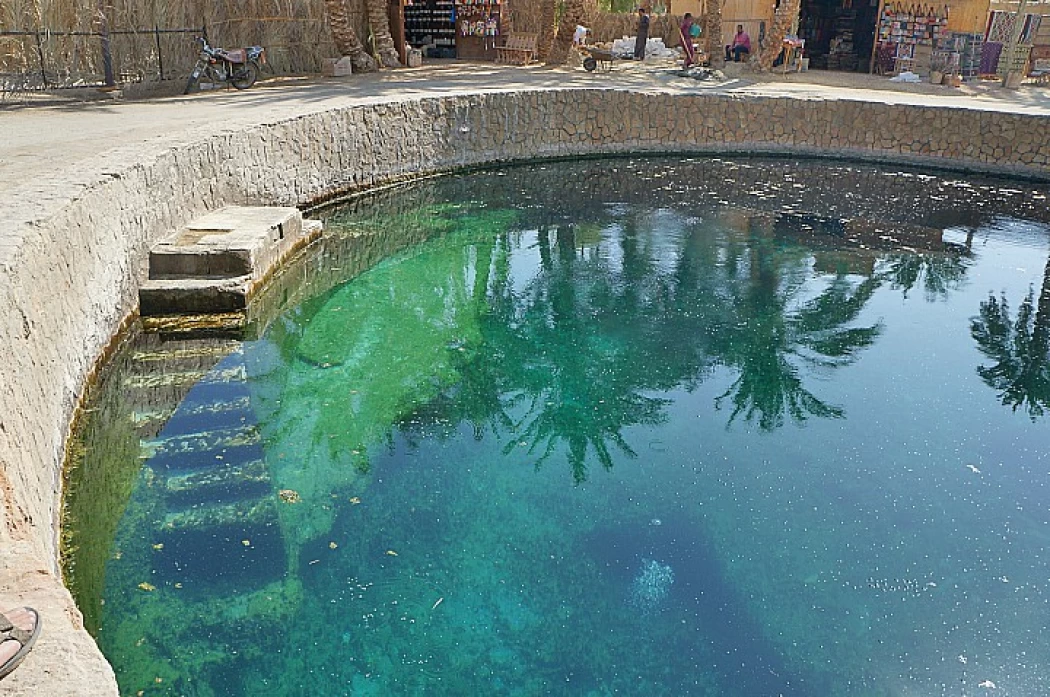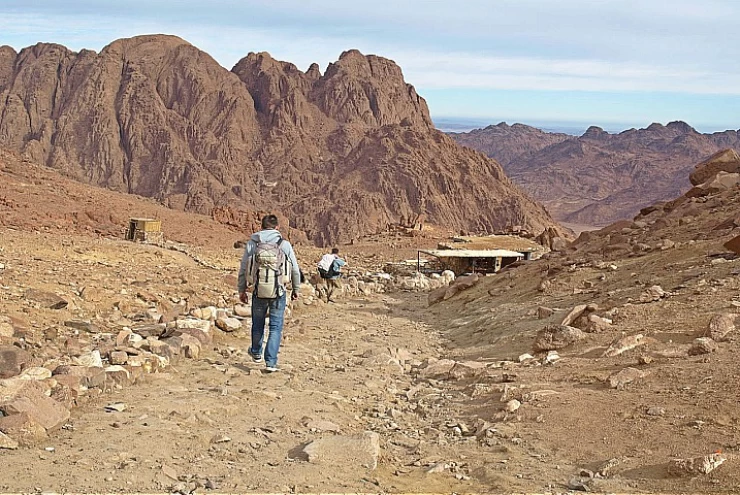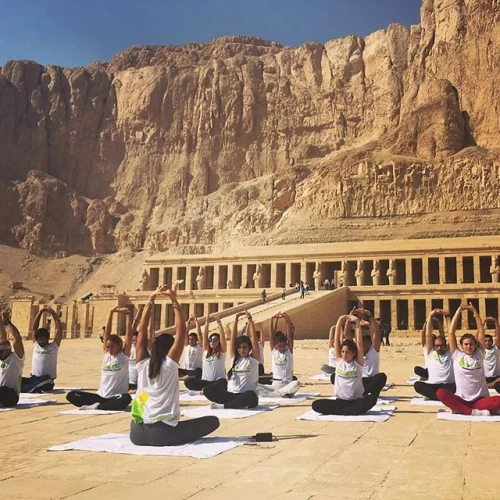
Natural Water Springs in Egypt
Natural Water Springs in Egypt
Egypt is known for its cities, mineral and sulfur water, dry, moisture-free weather, and soil of sand and silt, which is proper for treating numerous diseases, especially skin diseases and any disease marked by inflammation and pain in the joints, muscles, or fibrous tissue, especially rheumatoid arthritis. Due to its distinctive natural properties, Egypt has a multiplicity of beaches and seas. Many sulfur and mineral eyes are spread in Egypt.
Famed for its deserts and ancient wonders, have you heard about Egypt's natural water springs that induce relaxation and healing and wow with fabulous views? If you're interested in complete seclusion, soaking in warm mineral water, and an adventure in the desert, here are some of the best natural water springs in Egypt that are worth a visit.
This natural water also contains several mineral salts and some minerals of therapeutic value such as sodium carbonate and varying proportions of some metal elements. It is like magnesium and iron, and it is distinguished by its depth, amplitude, and temperature which ranges between 30 and 70 degrees Celsius. Laboratory analyses have shown the proportion of salinity in these natural water resources for hospitalization, in addition to the availability of silt in the bottoms of these sulfur-water springs with its therapeutic properties that cure many bone diseases, diseases of the digestive system, respiratory system, skin diseases, etc. It has also been proven that it is very beneficial in the case of treating arthritis patients by burial in the sand. It has passed through and produced economically in recent years, within the framework of strict scientific control on quality and standard specifications.
In addition, research has confirmed that the Red Sea water with its chemical content and the presence of coral reefs in it helps to recover from psoriasis, and therefore many tourist areas enjoy the advantage of medical travel in Egypt, which are areas of ancient historical fame such as Helwan, Ain Al-Sirah, Al Ain Al Sokhna, Hurghada, Fayoum, the oases region and Siwa The New Valley, Aswan, Sinai, and finally, the city of Safaga, which is located on the shore of the Red Sea, south of Hurghada, which has all the elements of medical tourism, which you visit through Egyptian travel packages, and its fame is that black sand has The ability to get rid of some skin patients and the most famous is psoriasis.
The number of natural eyes in Egypt is 1450 eyes, fountains, and wells that spread throughout Egypt east and west, some of which are found in the Western Desert by entering oases and marine oases, including what is found in Cairo like the Helwan eyes group and Ain Sirah, some of which are in the Eastern Desert, some of which are in Sinai such as Pharaoh's spring and Moses water spring are among the features of medical tourism in Egypt.
Many natural water springs spread throughout Egypt, the most important of which is Siwa Oasis, which lies to the west of Marsa Matrouh by about 300 km. It occupies the forefront position among the optimal places for medical tourism and natural hospitalization in Egypt and is characterized by charming poetic calm, air purity, the purity of the sky, and mild temperature, which can be visited with Cairo Top Tours by booking Egypt day tours.
Egypt is known for its cities, mineral and sulfur water, dry, moisture-free weather, and soil of sand and silt, which is proper for treating numerous diseases, especially skin diseases and any disease marked by inflammation and pain in the joints, muscles, or fibrous tissue, especially rheumatoid arthritis. Due to its distinctive natural properties, Egypt has a multiplicity of beaches and seas. Many sulfur and mineral eyes are spread in Egypt.
Famed for its deserts and ancient wonders, have you heard about Egypt's natural water springs that induce relaxation and healing and wow with fabulous views? If you're interested in complete seclusion, soaking in warm mineral water, and an adventure in the desert, here are some of the best natural water springs in Egypt that are worth a visit.
This natural water also contains several mineral salts and some minerals of therapeutic value such as sodium carbonate and varying proportions of some metal elements. It is like magnesium and iron, and it is distinguished by its depth, amplitude, and temperature which ranges between 30 and 70 degrees Celsius.
Laboratory analyses have shown the proportion of salinity in these natural water resources for hospitalization, in addition to the availability of silt in the bottoms of these sulfur-water springs with its therapeutic properties that cure many bone diseases, diseases of the digestive system, respiratory system, skin diseases, etc. It has also been proven that it is very beneficial in the case of treating arthritis patients by burial in the sand. It has passed through and produced economically in recent years, within the framework of strict scientific control on quality and standard specifications.
The number of natural eyes in Egypt is 1450 eyes, fountains, and wells that spread throughout Egypt east and west, some of which are found in the Western Desert by entering oases and marine oases, including what is found in Cairo like the Helwan eyes group and Ain Sirah, some of which are in the Eastern Desert, some of which are in Sinai such as Pharaoh's spring and Moses water spring are among the features of medical tourism in Egypt.
Many natural water springs spread throughout Egypt, the most important of which is Siwa Oasis, which lies to the west of Marsa Matrouh by about 300 km. It occupies the forefront position among the optimal places for medical tourism and natural hospitalization in Egypt and is characterized by charming poetic calm, air purity, the purity of the sky, and mild temperature, which can be visited with Cairo Top Tours by booking Egypt day tours.
About 180 kilometers from Hammam Musa, there is a mountain cave in the city of Abu Zenima from which extremely hot sulfur springs erupt, with temperatures ranging between 55 and 75 degrees Celsius, reaching the boiling point.
The sulfur springs in Abu Zenima are known as «Pharaoh's Bath» and their hot water flows into the sea without benefiting from it. However, some tourism companies obtained approvals to exploit the area and transform it into a tourist and therapeutic resort, and began constructing concrete structures, but they were not completed.
Musa Baths are characterized by a temperature of 37 degrees throughout the year and their water is rich in sodium and magnesium. It is located in South Sinai, one of the most famous medical tourism places in the governorate.
Hammam Musa is located 5 kilometers from Tur Sinai –the capital of the governorate - surrounded by many palm trees, and has sulfurous waters with multiple mineral elements.
It is noteworthy that the sodium found in the water of Hammam Musa helps speed up wound healing, while magnesium helps the color cells in the skin regain their vitality, to restore the natural color of the skin, and has a strong effect on treating various skin diseases such as vitiligo, psoriasis, and skin tags.
















